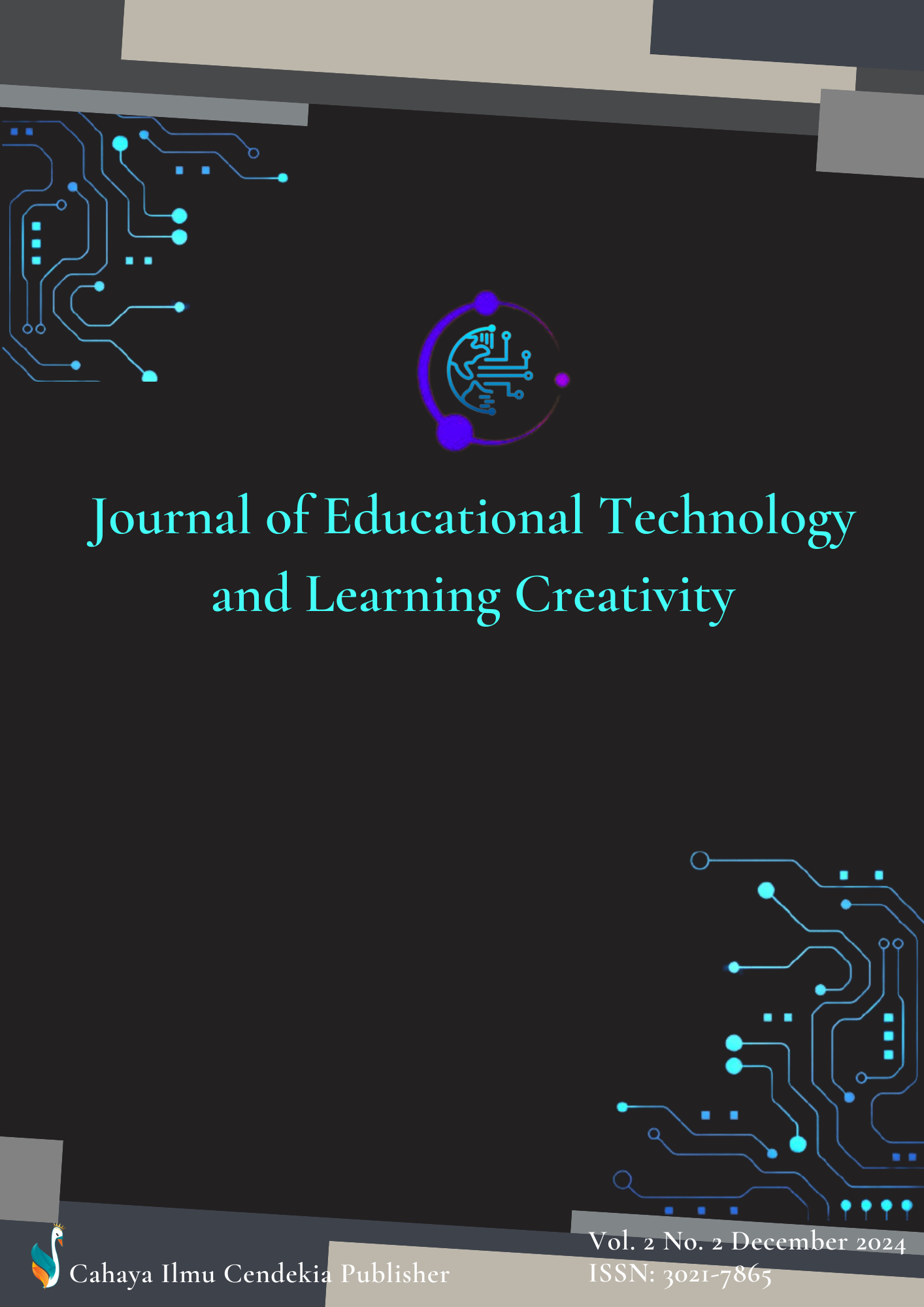Geomics as Interactive Geography Learning Media: A Development Study on Environmental Material in High Schools
Abstract
Purpose of the study: This study aims to develop geography comic media on environmental material for class XI students of Sultan Agung 1 Islamic Senior High School, Semarang.
Methodology: The methodology used in this study is Research and Development (R&D) with a One-Group Pretest-Posttest Design. The tools used include multiple-choice tests, student response questionnaires, and media validation questionnaires. Data analysis software uses descriptive statistics and validity-reliability tests. Media feasibility assessments are carried out through reviews by material and media experts, as well as student response surveys.
Main Findings: The results of media expert validation showed that geography comic media (GEOMIK) was very feasible to use with a feasibility percentage of 89.06%. Material expert validation showed a feasibility of 78.12%, and geography teachers 92.18%. Student responses stated that the media was very interesting with a percentage of 83.24%. Student learning outcomes increased from an average of 65.29 to 81.81 after using the media.
Novelty/Originality of this study: The results of this study support the use of GEOMIK as an effective learning media in improving student learning outcomes in environmental material. This media is not only visually appealing but is also able to convey information in a way that is easy to understand, increase student engagement in learning, and help students develop a deeper understanding of the topics being studied.
References
Ž. Bojovi, Petar D. Bojović, Dušan Vujošević, and J. Šuh, “Education in times of crisis : Rapid transition to distance learning,” Comput Appl Eng Educ, vol. 28, no. May, pp. 1467–1489, 2020, doi: 10.1002/cae.22318.
Y. Ariyana, A. Pudjiastuti, R. Bestary, and Zamroni, Learning Oriented Handbook on Higher Order Thinking Skills. Jakara: Ministry of Education and Culture, 2018.
N. Budiyanti, A. A. Aziz, and A. S. Mansyur, “The Formulation of The Goal of Insan Kamil as a Basis for The Development of Islamic Education Curriculum,” IJECA Int. J. Educ. Curric. Appl., vol. 3, no. 2, pp. 81–90, 2020, doi: 10.31764/ijeca.v3i2.2252.
M. Kosim, F. Muqoddam, F. Mubarok, and N. Q. Laila, “The dynamics of Islamic education policies in Indonesia The dynamics of Islamic education policies in Indonesia,” Cogent Educ., vol. 10, no. 1, 2023, doi: 10.1080/2331186X.2023.2172930.
Amini, Marliani, Elfrianto, and I. Kemal, “Work Motivation and Work Discipline on Teachers ’ Performance in State Vocational Schools,” Al-Ishlah J. Pendidik., vol. 14, no. 2, pp. 2271–2280, 2022, doi: 10.35445/alishlah.v14i1.973.
J. Shaturaev, “Financing and Management of Islamic (Madrasah) Education in Indonesia,” Zesz. Nauk. Politech. Częstochowskiej Zarządzanie, vol. 42, no. 1, pp. 57–65, 2021, doi: 10.17512/znpcz.2021.2.05.
K. Komalasari, A. Abdulkarim, and D. Saripudin, “Culture-based social studies learning model in developing student multiculturalism,” New Educ. Rev., vol. 51, no. 1, pp. 173–183, 2018, doi: 10.15804/TNER.2018.51.1.14.
J. Timm and M. Barth, “Making education for sustainable development happen in elementary schools : the role of teachers,” Environ. Educ. Res., 2020, doi: 10.1080/13504622.2020.1813256.
M. H. Iqbal, S. A. Siddiqie, and M. A. Mazid, “Rethinking theories of lesson plan for effective teaching and learning,” Soc. Sci. Humanit. Open, vol. 4, no. 1, p. 100172, 2021, doi: 10.1016/j.ssaho.2021.100172.
Y. Zhang, H. Zhang, S. Li, Y. Li, C. Hu, and H. Li, “Development of a short-form Chinese health literacy scale for low salt consumption (CHLSalt-22) and its validation among hypertensive patients,” BMC Nutr., vol. 8, no. 1, pp. 1–14, 2022, doi: 10.1186/s40795-022-00594-9.
J. Zhao et al., “A review of statistical methods for dietary pattern analysis,” Nutr. J., vol. 20, no. 37, pp. 1–18, 2021, doi: 10.1186/s12937-021-00692-7.
R. Rachmadtullah, H. Syofyan, and Rasmitadila, “The role of civic education teachers in implementing multicultural education in elementary school students,” Univers. J. Educ. Res., vol. 8, no. 2, pp. 540–546, 2020, doi: 10.13189/ujer.2020.080225.
I. Supena, A. Darmuki, and A. Hariyadi, “The influence of 4C (constructive, critical, creativity, collaborative) learning model on students’ learning outcomes,” Int. J. Instr., vol. 14, no. 3, pp. 873–892, 2021, doi: 10.29333/iji.2021.14351a.
S. M. Alnajdi, “The Effectiveness of Designing and Using a Practical Interactive Lesson based on ADDIE Model to Enhance Students’ Learning Performances in University of Tabuk,” J. Educ. Learn., vol. 7, no. 6, p. 212, 2018, doi: 10.5539/jel.v7n6p212.
N. N. Hawa, S. Zarina, S. Zakaria, M. R. Razman, N. A. Majid, and A. M. Taib, “Element of Disaster Risk Reduction in Geography Education in Malaysia,” Sustainability, vol. 15, no. 1326., pp. 1–13, 2023, doi: 10.3390/su15021326.
I. Lindsay and N. N. Kong, “Using the ArcGIS collector mobile app for settlement survey data collection in Armenia,” Adv. Archaeol. Pract., vol. 8, no. 4, pp. 322–336, 2020, doi: 10.1017/aap.2020.26.
N. Hamid, G. Roehrig, D. L. Setyowati, H. Rachmah, M. A. Royyani, and H. Mahat, “Development Model for Environment-Based Learning to Improve Junior High School Students’ Geographical Skills,” Rev. Int. Geogr. Educ. Online, vol. 11, no. 2, pp. 461–481, 2021, doi: 10.33403/rigeo.833857.
L. Suwala, “Concepts of space, refiguration of spaces, and comparative research: Perspectives from economic geography and regional economics,” Forum Qual. Sozialforsch., vol. 22, no. 3, 2021, doi: 10.17169/fqs-22.3.3789.
P. Bagoly-Simó, J. Hartmann, and V. Reinke, “School Geography under COVID-19: Geographical Knowledge in the German Formal Education,” Tijdschr. voor Econ. en Soc. Geogr., vol. 111, no. 3, pp. 224–238, 2020, doi: 10.1111/tesg.12452.
A. A. Fadly, P. Purwanto, H. Masruroh, and S. Sumarmi, “Pengaruh penggunaan webGIS (Web Based Geographic Information System) terhadap hasil belajar geografi dan keterampilan geografi secara berkelanjutan,” J. Integr. dan Harmon. Inov. Ilmu-Ilmu Sos., vol. 2, no. 2, pp. 128–142, 2022, doi: 10.17977/um063v2i2p128-142.
L. Kano, E. W. K. Tsang, and H. W. chung Yeung, “Global value chains: A review of the multi-disciplinary literature,” J. Int. Bus. Stud., vol. 51, no. 4, pp. 577–622, 2020, doi: 10.1057/s41267-020-00304-2.
J. Zeng, S. Parks, and J. Shang, “To learn scientifically, effectively, and enjoyably: A review of educational games,” Hum. Behav. Emerg. Technol., vol. 2, no. 2, pp. 186–195, 2020, doi: 10.1002/hbe2.188.
J. Jusmaniar, I. Riani, E. C. Anderson, M. C. Lee, and S. W. Oktavia, “Gasing Game: Ethnoscientific Exploration of Circular Motion in Physics Learning on the Coast of East Sumatra to Build the Character of Perseverance,” Schrödinger J. Phys. Educ., vol. 5, no. 1, pp. 1–9, 2024, doi: 10.37251/sjpe.v5i1.902.
D. R. Retnani, R. Royani, C. Beccles, and A. Afras, “Improving Science Learning Outcomes on Light and Optical Instruments Through Visual Methods in Junior High Schools,” Schrödinger J. Phys. Educ., vol. 5, no. 1, pp. 32–38, 2024, doi: 10.37251/sjpe.v5i1.883.
C. M. Amerstorfer and C. Freiin von Münster-Kistner, “Student perceptions of academic engagement and student-teacher relationships in problem-based learning,” Front. Psychol., vol. 12, no. October, pp. 1–18, 2021, doi: 10.3389/fpsyg.2021.713057.
M. M. Al-Ababneh, “Linking Ontology, Epistemology and Research Methodology,” Sci. Philos., vol. 8, no. 1, pp. 75–91, 2020, doi: 10.23756/sp.v8i1.500.
S. L. Siedlecki, “Understanding descriptive research designs and methods,” Clin. Nurse Spec., vol. 34, no. 1, pp. 8–12, 2020.
I. Mahfud and E. B. Fahrizqi, “Development of Soccer Passing Training Models with Play Method for Base School Beginners,” J. Sport., vol. 1, no. 1, pp. 15–22, 2023.
J. Arfi, A. Wahyuri, G. Gusril, W. Rasyid, and Y. Ockta, “Developing Engaging Audio-Visual Learning Media for Basic Locomotor Patterns through Play-Based Activities for Early Learners,” J. Educ. Teach. Learn., vol. 9, no. 1, pp. 40–46, 2024.
G. K. Mweshi and K. Sakyi, “Application of sampling methods for the research design,” Arch. Bus. Res., vol. 8, no. 11, pp. 180–193, 2020, doi: 10.14738/abr.811.9042.
T. S. Nanjundeswaraswamy and S. Divakar, “Determination of sample size and sampling methods in applied research,” Proc. Eng. Sci., vol. 3, no. 1, pp. 25–32, 2021.
Copyright (c) 2024 Abdul Muis, Monton Pholboon, Ahmad Nur Kamali

This work is licensed under a Creative Commons Attribution 4.0 International License.
Authors who publish with this journal agree to the following terms:
- Authors retain copyright and acknowledge that the Journal of Educational Technology and Learning Creativity is the first publisher licensed under a Creative Commons Attribution 4.0 International License.
- Authors are able to enter into separate, additional contractual arrangements for the non-exclusive distribution of the journal's published version of the work (e.g., post it to an institutional repository or publish it in a book), with an acknowledgment of its initial publication in this journal.
- Authors are permitted and encouraged to post their work online (e.g., in institutional repositories or on their website) prior to and during the submission process, as it can lead to productive exchanges and earlier and greater citation of published work.


.png)


.png)
.png)
.png)












